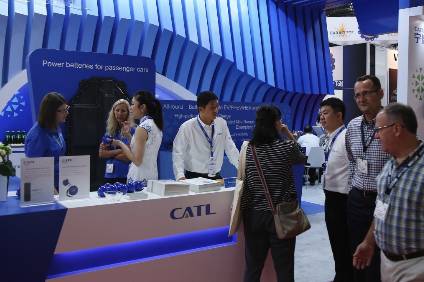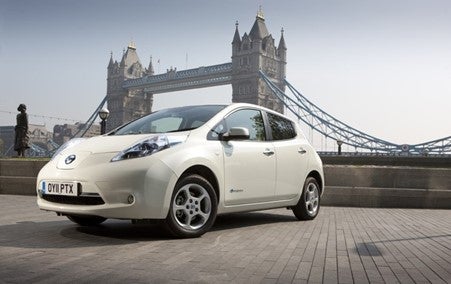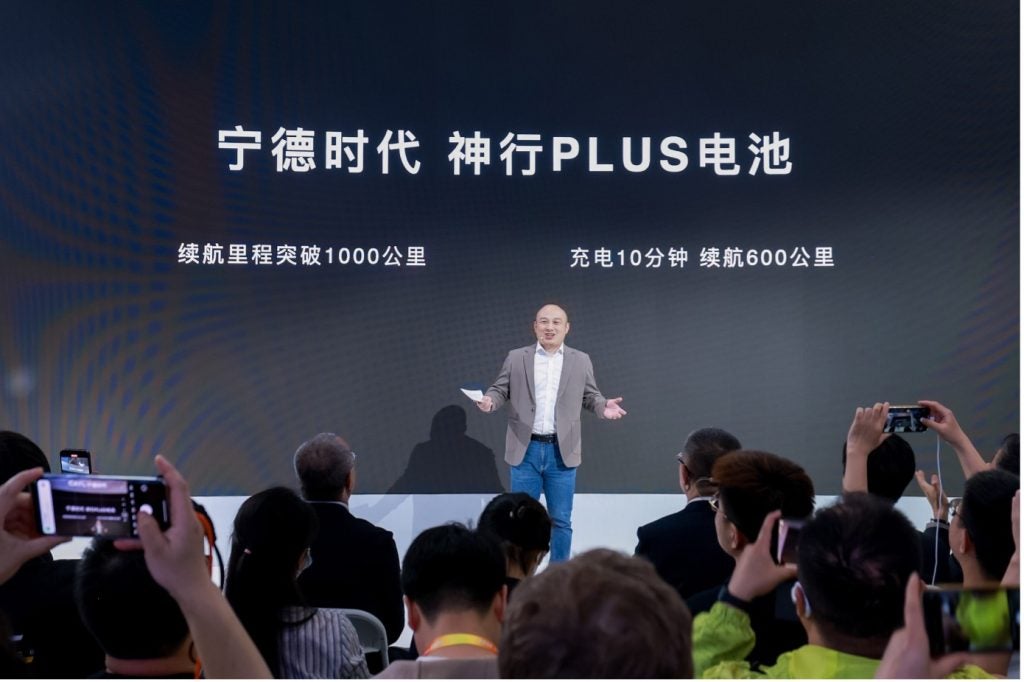
Lithium-ion batteries are the de facto standard for electric vehicles. They offer the kind of energy density necessary to give vehicles enough range for most uses, are resilient enough to last for thousands of charging cycles, offer enough power to drive an electric motor, and are available at a price and quantity that makes them ideal for the automotive industry.
While development of lithium-ion cells has yielded gradual improvements in energy density or cycle life, battery players are also looking to new chemistries beyond the dominant lithium-based approaches commonly used today to steal an edge over their competitors. One such emerging field of battery technology revolves around swapping out the lithium content of these cells for sodium.
Sodium is an alkali metal and sits one row below lithium in the periodic table. As such, it offers similar properties to lithium and can be used as a charge carrier in a battery cell. Each sodium ion, however, is larger than an equivalent lithium ion and battery researchers have struggled to design an anode (positively charged electrode) that can absorb enough sodium ions to give a sodium-based cell enough energy density to make it applicable to electrified vehicles.
How well do you really know your competitors?
Access the most comprehensive Company Profiles on the market, powered by GlobalData. Save hours of research. Gain competitive edge.

Thank you!
Your download email will arrive shortly
Not ready to buy yet? Download a free sample
We are confident about the unique quality of our Company Profiles. However, we want you to make the most beneficial decision for your business, so we offer a free sample that you can download by submitting the below form
By GlobalDataIn addition, lithium is the least dense metal known to science so weighs less than sodium. This means that sodium-ion batteries are heavier than lithium-ion versions. In electric vehicles especially, weight is a critical factor in determining how much range can be achieved because for every additional kilo added, more energy must be wasted to move it.
A recent development that has somewhat swung the needle back in sodium-ion’s favour is the further refinement of carbon-based anodes. Previously, graphite was employed as an anode in sodium-ion but its ability to absorb sodium ions was limited, restricting its performance. However, German and Russian researchers at the Helmholtz Centre Dresden-Rossendorf have demonstrated that graphene – single-atom-thick carbon – could be used as anode. Graphene is potentially able to capture many sodium ions between atom-thick sheets of carbon. This would drastically increase the ionic absorption of the anode and bring the performance of sodium-ion cells into the same ballpark as lithium-ion.
If they can be optimised and commercialised, sodium-ion cells offer some distinct advantages over lithium-ion cells. Chinese battery manufacturer CATL claims sodium-ion cells could offer greater fast-charging performance than current Li-ion cells, along with lifecycle and safety performance that matches or exceeds that of its own LFP-based lithium cells. CATL also points to sodium-ion’s impressive low-temperature performance where the chemistry sees less capacity and performance fading than lithium-ion, which is known to struggle in cold climates.
Plus, sodium-ion cells can be made without some of the rarefied resources needed to build lithium-ion cells. For one, sodium is far more abundant than lithium, so can be produced in a larger quantity at a lower cost – even if sodium-ion cells do not become common in EVs, this reason alone makes them potentially very interesting in the static energy storage market, where weight and energy density are less of a detriment. In addition, sodium-ion cells do not make use of cobalt, which is costly and has been linked with human rights abuses in mines in the Democratic Republic of the Congo.
From a manufacturing perspective, sodium-ion cells can be made using existing battery manufacturing equipment so would not require costly factory redesigns to be put into production. CATL began small-scale commercial deployment of sodium-ion battery cells in July 2021 and plans to ramp up the sodium-ion supply chain through to 2023.
CATL says its first generation of sodium-ion cells achieve a gravimetric energy density of 160Wh/kg. This is relatively low compared to existing commercial lithium-ion cells – the 2170-format Li-ion cells used in Tesla Model 3 and Model Y vehicles are thought to achieve a capacity in excess of 250Wh/kg, and Tesla’s delayed 4680 cell is claimed to achieve up to 380Wh/kg. However, the lower capacity may be less of a concern for EVs in very cold climates because the strong low-temperature performance of sodium-ion cells should make up the deficit to Li-ion cells, which will suffer from significant fade in the cold.
Interestingly, CATL has proposed an ‘AB battery solution’ that uses both sodium and lithium based cells in one EV pack. This aims to leverage the benefits of both chemistries – combining the low-temperature performance of sodium-ion with the greater energy density offered by lithium-ion. Both cell types are compatible at a pack level and can have their charge levels carefully managed by an appropriate battery management system.
By Mike Vousden
CATL to produce sodium ion EV batteries in 2022
https://www.just-auto.com/news/catl-to-produce-sodium-ion-ev-batteries-in-2022/







